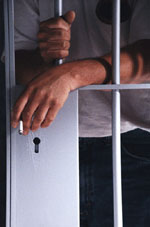Law Weblog
Corporate manslaughter will become law, very soon …
Friday 20 July 2007 at 1:21 pm | In News | Post CommentA five year wait for the passage of the Corporate Manslaughter Bill is finally over. The Lords have had their way, the government was defeated over the effect on police and prisons.
Full story in The Times, here.
High Court Judge referred to the Office for Judicial Complaints
Wednesday 18 July 2007 at 6:22 am | In News | Post Comment For the first time the Lord Chief Justice has taken steps to initiate disciplinary action against a High Court judge by referring the judge to the Office for Judicial Complaints (OJC), which was set up last year under the Constitutional Reform Act 2005.
For the first time the Lord Chief Justice has taken steps to initiate disciplinary action against a High Court judge by referring the judge to the Office for Judicial Complaints (OJC), which was set up last year under the Constitutional Reform Act 2005.
It is a first step towards possible disciplinary proceedings against the judge. It could lead to a reprimand or even to a recommendation to ask Parliament to remove him. A High Court Judge can only be removed from office by parliament.
Mr Justice Peter Smith (the judge who presided over the “Da Vinci Code” case) was slammed by the Court of Appeal for marring his judgment with his personal feelings.
[In the “Da Vinci Code” case the judge wrote a coded message, thought to have been unprecedented in court judgments].
The case that has provoked the referral to the OJC came after Peter Smith J had been in negotiations to join a law firm called Addleshaws. The negotiations broke down.
Smith said that he had been angered by his treatment which had wasted his time. The Court of Appeal found that Smith had “animosity†towards the firm.
Then a case was due to be heard before Peter Smith J involving a party who was head of a department at Addleshaws. An application to the judge for him to stand down (be recused) was denied by him.
The Court of Appeal ruled that instead of testing the evidence of the witness the judge cross examined him in a way that a “defence advocate†would.
The Court of Appeal ruled that Peter Smith J’s actions were “wholly inappropriate†especially in relation to the cross-examination and that the court was “quite satisfied that the judge should have recused himselfâ€.
The court also held that Smith’s attitude towards Addleshaws, about which the firm was complaining, “rose directly from the judge’s private affairsâ€.
The conduct of the hearing, it ruled, underlined the fact that he had been “personally involvedâ€.
“Prison works…”
Tuesday 17 July 2007 at 9:20 am | In News | Post CommentWarning: Undefined array key "class" in /home/sixthfor/public_html/lawblog/wp-content/plugins/image-caption/image-caption.php on line 125
Criminals released early from prison because of an overcrowding crisis committed eight more offences within days of being freed, the Ministry of Justice said. One of the principles of sentencing is ‘incapacitation’ this is achieved by imprisonment.
Full story in The Independent, here.
Wigs and bands (collars) will not be worn in civil courts from 2008
Thursday 12 July 2007 at 9:24 am | In News | 1 CommentFatal error: Uncaught Error: Call to undefined function imagecreatefromstring() in /home/sixthfor/public_html/lawblog/wp-content/plugins/image-caption/image-caption.php:161 Stack trace: #0 /home/sixthfor/public_html/lawblog/wp-content/plugins/image-caption/image-caption.php(92): ic_get_image('http://www.sixt...') #1 [internal function]: ic_add(Array) #2 /home/sixthfor/public_html/lawblog/wp-content/plugins/image-caption/image-caption.php(44): preg_replace_callback('/(<p>)?(<a[^>]*...', 'ic_add', '<p><a href="htt...') #3 /home/sixthfor/public_html/lawblog/wp-includes/class-wp-hook.php(324): ic_parse('<p><a href="htt...') #4 /home/sixthfor/public_html/lawblog/wp-includes/plugin.php(205): WP_Hook->apply_filters('<p><a href="htt...', Array) #5 /home/sixthfor/public_html/lawblog/wp-includes/post-template.php(256): apply_filters('the_content', '<a href="http:/...') #6 /home/sixthfor/public_html/lawblog/wp-content/themes/pool/index.php(13): the_content('Continue readin...') #7 /home/sixthfor/public_html/lawblog/wp-includes/template-loader.php(106): include('/home/sixthfor/...') #8 /home/sixthfor/public_html/lawblog/wp-blog-header.php(19): require_once('/home/sixthfor/...') #9 /home/sixthfor/public_html/lawblog/index.php(17): require('/home/sixthfor/...') #10 {main} thrown in /home/sixthfor/public_html/lawblog/wp-content/plugins/image-caption/image-caption.php on line 161
